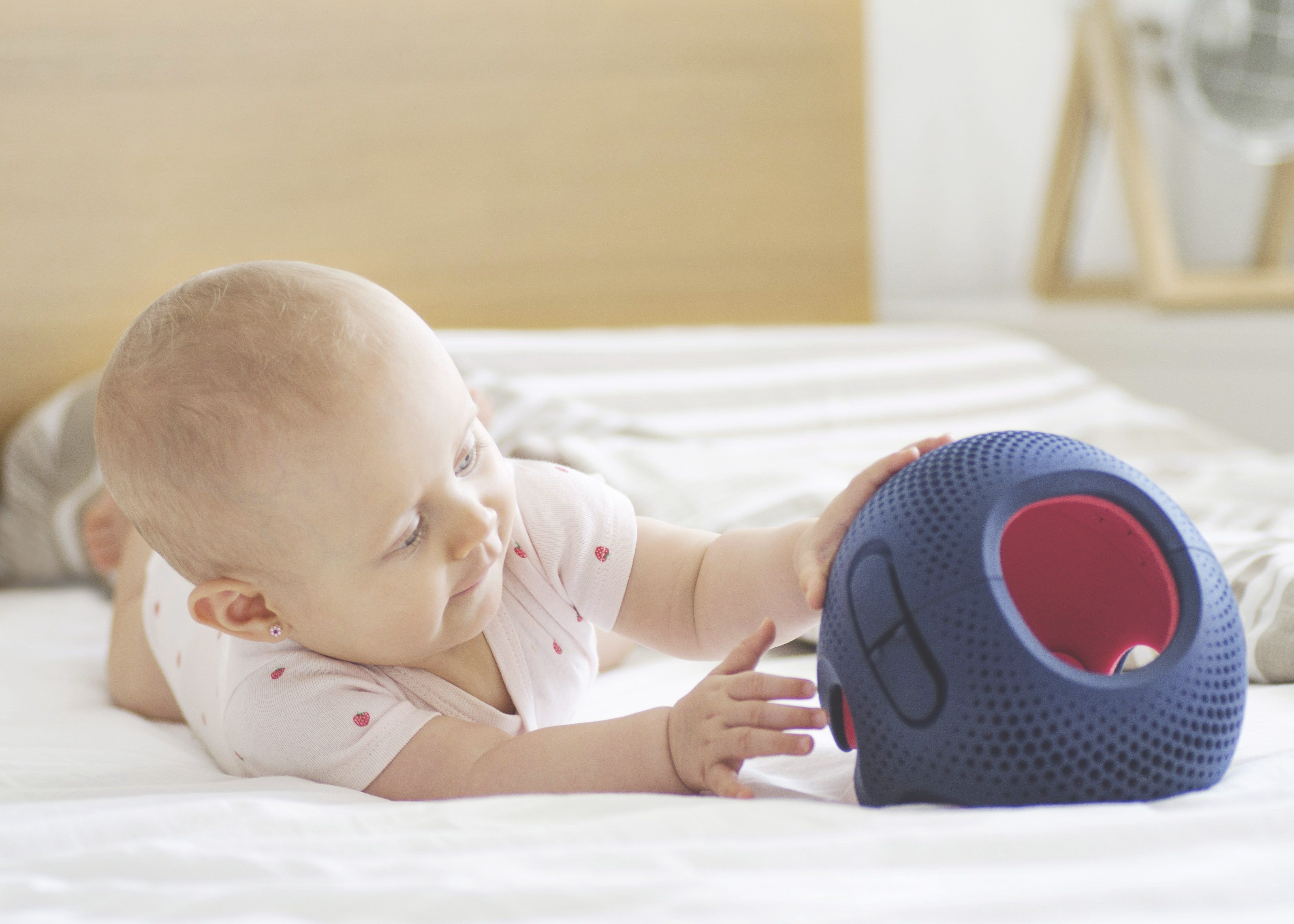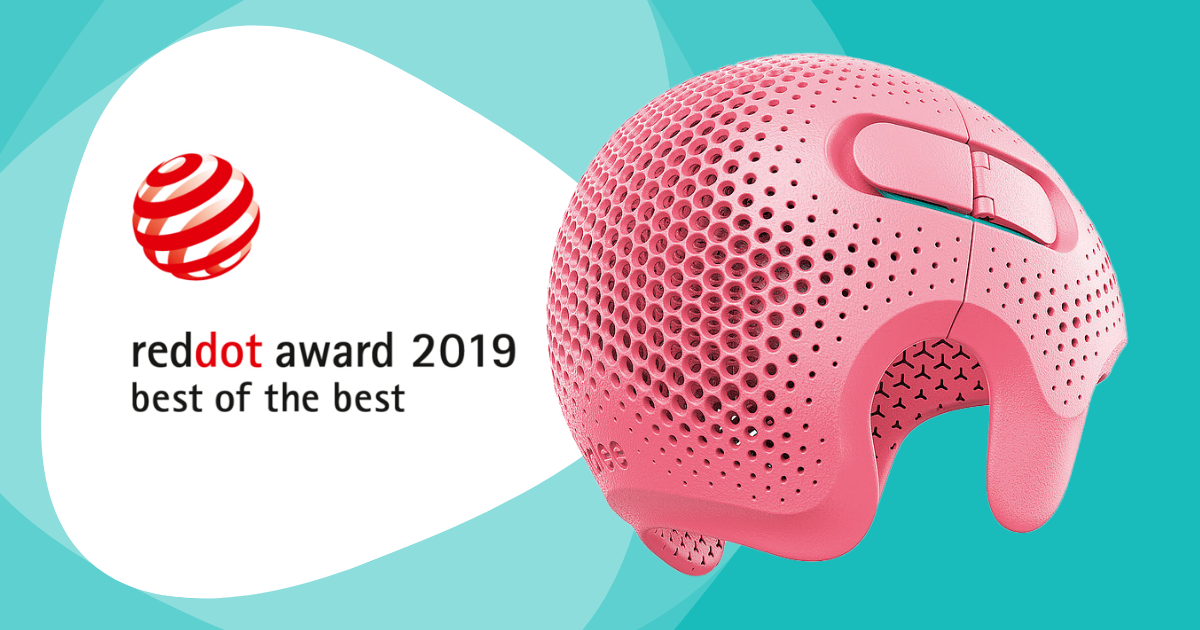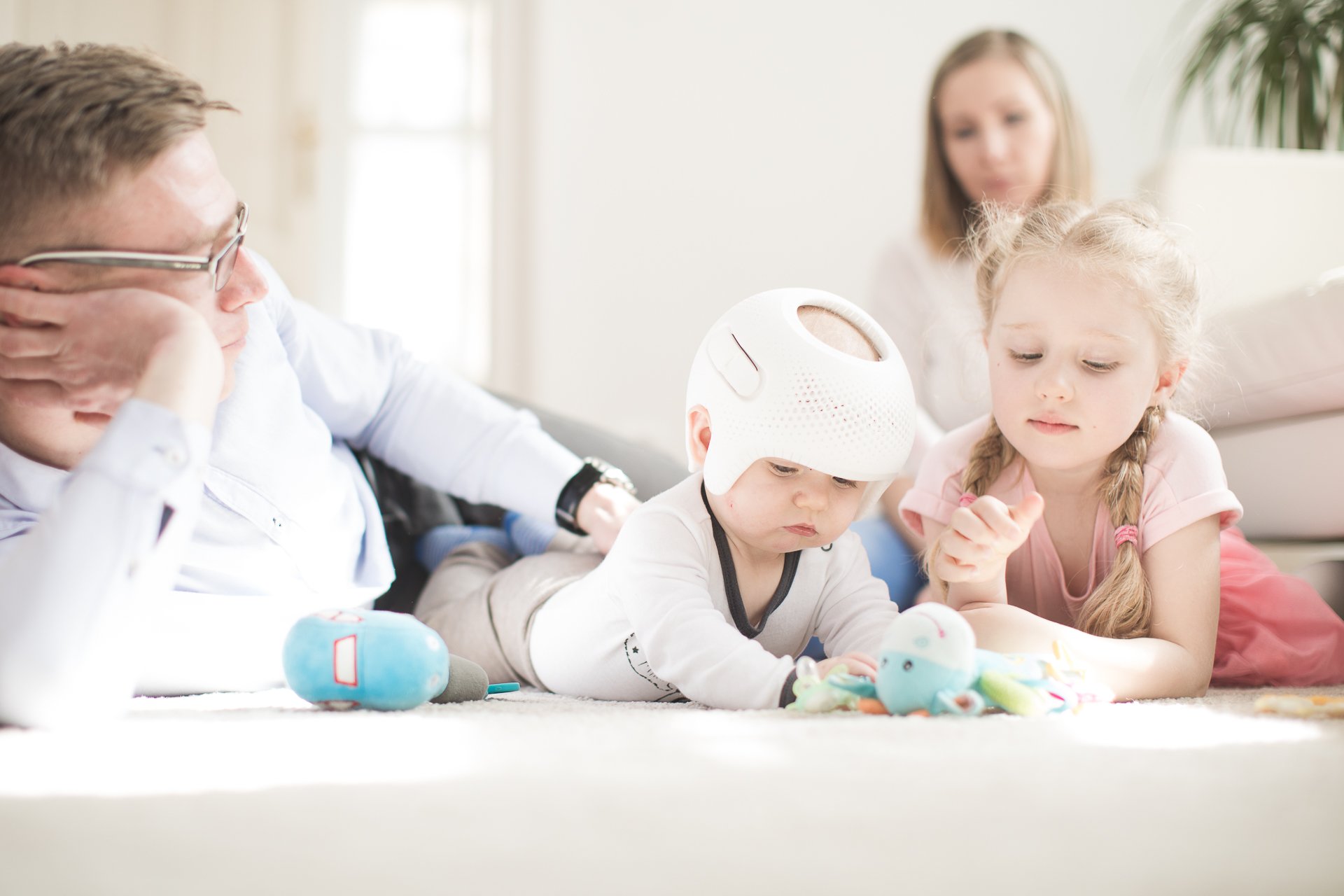
Flat head syndrome can often develop due to prolonged pressure on one part of the head and there are many reasons that this happens. It's important to monitor your baby's head shape and seek a plagiocephaly assessment if you have concerns.
After reading this, whatever your decision, you need to act early as the window of opportunity to make changes is very short and babies over 12 – 14 months of age are too old to make any significant improvement.
Here are some guidelines for when to consider seeking an assessment:
- In the first few weeks of life, a baby’s bones are very soft and at about 6 to 8 weeks parents can’t notice that a flattened spot is developing. At this stage we’d recommend repositioning and taking active measures to make sure that the baby has full range of movement in their neck. If things aren’t settling by 4 to 6 months of age when babies start to sit and roll independently, then start to think about seeking advice. Many babies develop mild head shape irregularities due to the softness of their skulls and their position during sleep. Some degree of flattening may be normal and can often correct itself over time. However, if you notice persistent or worsening flattening, consider a plagiocephaly assessment.
- If the flat spot is noticeable and doesn't appear to be improving or is getting worse, it's a good idea to consult your doctor or health visitor. In the UK this is regarded as a purely cosmetic issue and parents are often dismissed being told that it will improve over time. This is true to some extent and a mild head shape difference will become unnoticeable but more severe differences will not have time to improve significantly without additional help.
- If there's a preference for looking in one direction? Babies who consistently turn their head to one side may be at a higher risk for developing plagiocephaly. This preference can lead to uneven pressure on the skull, causing flat spots to form.
- Asymmetrical facial features: If you notice that your baby's face is becoming asymmetrical, with the brow, cheek and ear on the side of the flattening being pushed forward, these are all signs of plagiocephaly and should prompt an assessment.
- Some parents may notice that their baby's developmental milestones, such as head control or reaching, are delayed. In such cases, an assessment can help determine if the plagiocephaly is linked with these delays and when physiotherapy can help to improve the range of motion and core muscle development skills. Improving the range of motion and control will help to limit further asymmetry but won’t necessarily correct the head shape. If you’re not seeing improvements here, then consider a head shape assessment from Technology in Motion.
- If there's a family history of craniofacial conditions or if your baby has other risk factors, such as being born prematurely or having torticollis (a condition that affects neck muscle movement), it's a good idea to seek an assessment earlier.
It's important to remember that some degree of head shape variation is common, and not all cases of plagiocephaly require intervention. In many cases, simple repositioning techniques, supervised tummy time, and physiotherapy can help improve head shape.
However, in more severe or persistent cases where there is facial asymmetry, ear misalignment and flattening which crosses the midline, orthotic treatment with a TiMbandAir might be recommended.
Ideally at 4 to 7 months of age but up to 14 months, consulting with our healthcare professionals can help determine the best course of action for your baby if plagiocephaly is a concern.
We offer a pre-assessment free of charge and will be able to give advice on the severity of your baby’s head shape.


